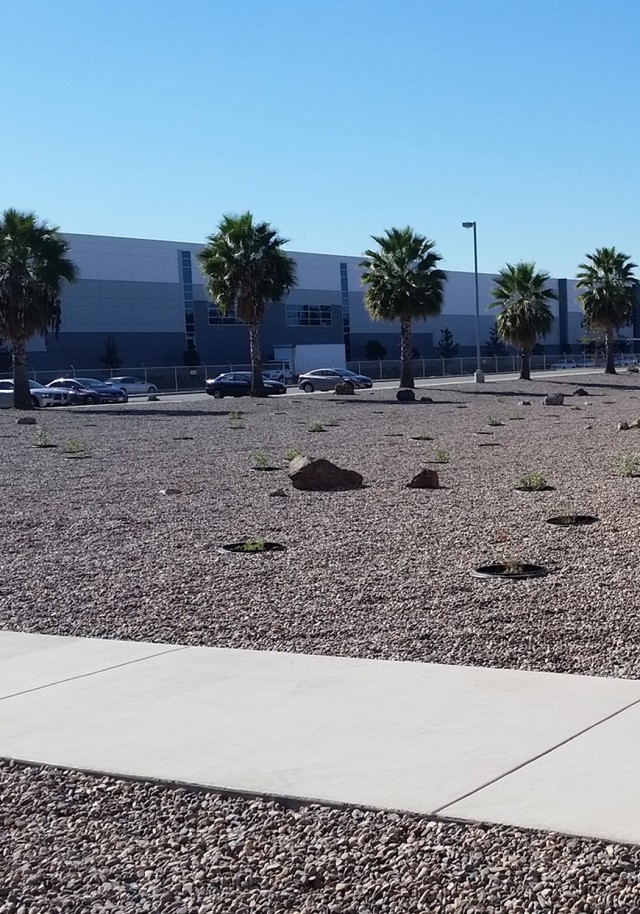In the 1746 edition of "Poor Richard's Almanack," American statesman Benjamin Franklin wrote, "When the well is dry, we will know the worth of water." The U.S. Army Reserve knows the worth of water. In fact, the success of every mission depends on it. At some sites, though, drought is turning water into a limited resource and conservation into a necessity.
The 63rd Regional Support Command (RSC) has found a practical way to combat the drought and reduce water consumption with some unique landscaping projects.
"Water conservation projects were, and are, necessary due to the water use observed at many sites," said Varun Sood, a resource efficiency manager for the 63rd RSC. Many facilities in the Command-- which includes the states of California, Nevada, Arizona, New Mexico, Texas, Oklahoma and Arkansas -- are located in arid geographic areas that continuously experience drought and water scarcity, resulting in high water bills and a lack of water security that threatens to disrupt readiness.
"We want to reduce our total water consumption," said Sood. To that end, the 63rd RSC added xeriscaping to conservation efforts.
Xeriscaping is the practice of landscaping and gardening that reduces or eliminates the need for supplemental irrigation. Originally developed for drought-afflicted areas, the principles of xeriscaping have a broadening appeal as a result of their many benefits.
Typically, xeriscapes have features that are less water intensive such as stone ground covers and native plants, which are plants that have naturally occurred in a particular habitat over time, with no human intervention. Native plants are well adapted to an area's unique climate and environmental characteristics such as its water availability, soil composition and indigenous insects. Xeriscapes therefore require less water, fewer fertilizers and fewer pesticides. As a result, these designs have the long-term potential to conserve water, prevent chemical pollution and save money. Hays Kinslow, an energy manager with the 63rd RSC, said that xeriscapes also improve the aesthetics of their sites and reduce the need for water infrastructure and grounds maintenance.
Over the past two years, xeriscapes have been completed in California at Los Alamitos Reserve Center in Los Alamitos, Holderman Hall Reserve Center in Los Angeles and Bell Reserve Center in Bell Gardens. "They are large facilities where we could make a big impact due to the amount of water used there for irrigation," Sood explained. Currently, another xeriscape is planned for Leymel Hall Reserve Center in Fresno, and the 63rd RSC is exploring ways to incorporate xeriscaping in future projects.
According to Sood, all of the 63rd RSC's projects include plants native to California, stone ground covers, drip irrigation systems and other features of a traditional xeric garden.
When xeriscapes have been combined with additional water conservation methods, such as plumbing improvements, the results have been quite impressive. The 63rd RSC has reduced its water use by nearly 38 percent from fiscal year 2014 to fiscal year 2015. "Xeriscape projects have reduced the need for irrigation and have definitely contributed to a reduction in water use at our sites," said Sood.
With their innovative ideas for landscapes that work with the environmental conditions at their sites, the 63rd RSC is contributing to a culture of conservation across the Army Reserve, and they are making every drop count.
For more information on the Army Reserve and its sustainability programs, visit usar.army.mil or usarsustainability.com. Like us on Facebook at facebook.com/USARSustainability and follow us on Twitter @USARGoGreen.








Social Sharing